The joy of welcoming a new baby into your home is matched only by the anxiety that comes with it. As children grow (and then crawl, and then walk), they’ll get into everything.
Potential hazards are everywhere, but not all of them are obvious. For example, you may think to cover hot radiators with a padded cover—but did you know that some houseplants are poisonous? (Here’s how to check.)
The good news: Many accidents can be prevented if your house is properly baby-proofed before the little one arrives. As a spokesperson for the Consumer Product Safety Commission (CPSC), Karla Crosswhite has some ideas on how to do that. “It’s our job to let kids explore their worlds,” she says, “but to do it safely
1. Secure The Windows
“More than 3,000 children fall out of windows each year,” says Crosswhite, who cautions that screens aren’t enough to protect a child from a fall. Install a window stop or window lock, so the windows won’t open more than four inches. Safety netting adds an additional layer of protection.
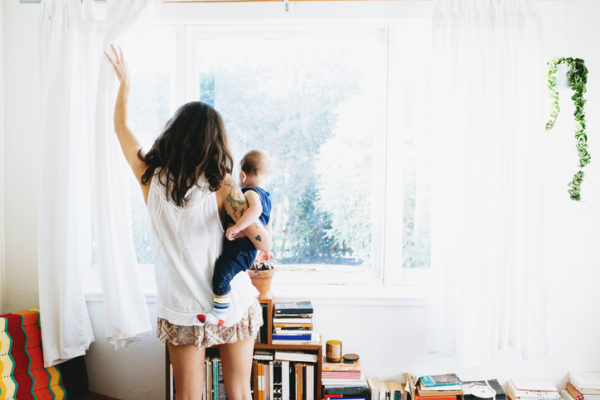
2. Reconsider Window Treatments
The CPSC reports that one child dies every month from strangulation caused by window-blind cords; another suffers near-strangulation. Install cordless blinds instead. They’re easy to find—almost all stores that sell blinds carry cordless versions.
3. Lock The Medicine Cabinet And Cleaning Products
Nearly 80,000 children went to emergency rooms for unintended poisoning in 2016, says Crosswhite; that includes accidental ingestion of medicines, cleaning products, laundry detergents and pods, and even mouthwash. All of these, along with matches and lighters, should be kept out of reach and out of sight of children. Use safety latches and locks on cabinets and drawers that are filled with potentially dangerous products, and don’t assume that childproof caps are enough. “Child-resistant lids don’t mean that children can’t get into them,” warns Crosswhite. “It only means that it takes longer for them to open them.”
4. Anchor Heavy Furniture And Appliances
Injuries can occur when children climb onto or pull themselves up onto heavy objects (such as televisions, shelves, dressers, chests, and kitchen ranges) and are crushed beneath them when they tip over. On average, a child is injured every 30 minutes from falling furniture. To prevent these kinds of accidents, anchor all heavy pieces of furniture and appliances to the wall or floor, and install anti-tip brackets on anything free-standing, like a stove.
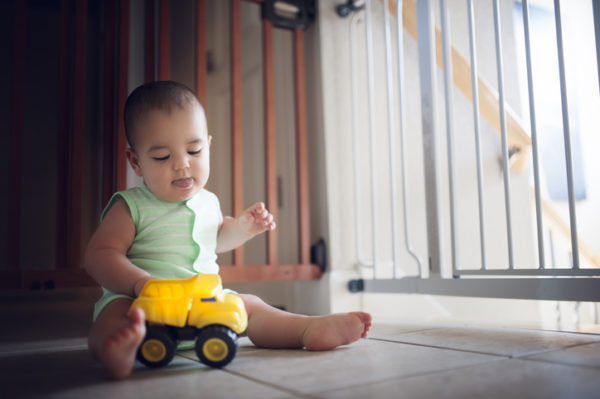
5. Install Safety Gates
Keep babies safely on the other side of areas that might be dangerous—the top of the stairs, the kitchen, the garage or any other potentially hazardous place—by installing safety gates. First, though, make sure the gate meets current safety standards (some older gates have accordion-style “V” shapes that could trap a child’s head and neck) and that you’re using the right gate for the location. You can use pressure-mounted gates between rooms; however, at the top and bottom of stairs, securely mount gates to the wall or another fixed object so they don’t give out under pressure.
6. Cover Electrical Outlets
Prevent accidental shocks and electrocution by covering outlets and plates to keep out tiny fingers. Make sure the covers are large enough to go over the plate openings (and to avoid becoming a choking hazard) and that they fit securely.
7. Secure Door Knobs
Closing doors to places you don’t want your child to go is only the first line of defense. Keep little hands from opening doors to forbidden rooms by using safety covers that are too big for a toddler’s hands to grab—or that require pressing on tabs (similar to a childproof cap) to open. Make sure the covers are sturdy enough that they can’t be easily wrested loose by a toddler but can be opened quickly by an adult in case of an emergency.
8. Lock Toilet Seats
Toilets are often overlooked as a drowning hazard in the home—the typical scenario involves a child under three years old falling headfirst into the basin. Babies can drown in as little as an inch of water within just a few seconds, so always be sure children are supervised in the bathroom. Make a habit of keeping the toilet lid down, and install toilet-seat locks to keep a small child from opening the lid.
9. Soften The Edges
Learning to walk means lots of falls for your little one—whether it’s onto the floor, into walls or against anything in their path. You can’t prevent falls, but you can reduce their impact by installing bumpers on corners and along sharp edges of furniture.
Another smart way to help protect your family? Get a life insurance policy through the GEICO Insurance Agency. Get a fast, free quote now.
Read more: 10 Essential Safety Tips for New Parents
By Ellise Pierce

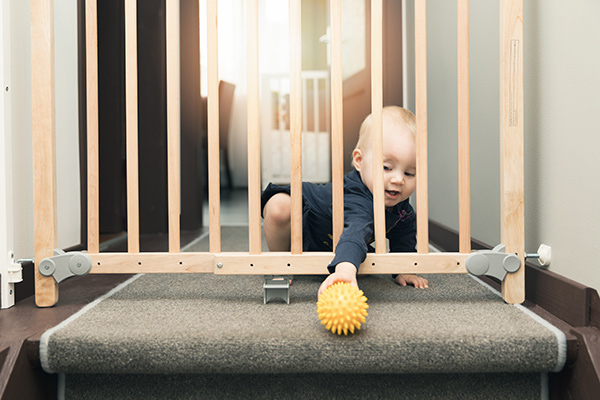

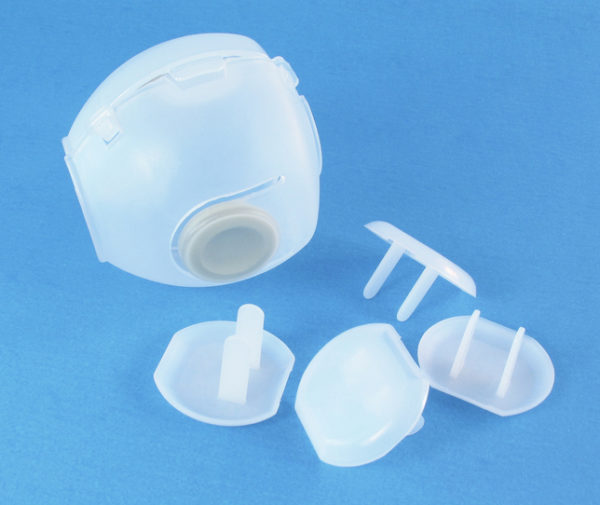



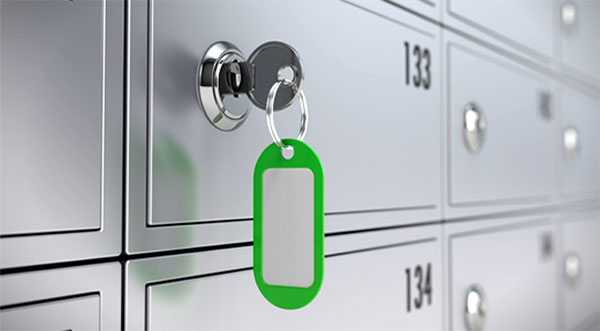



Cynthia says,
Great reminders/info
Safety House says,
It’s a Complete baby home safety article. and Its really helpful.